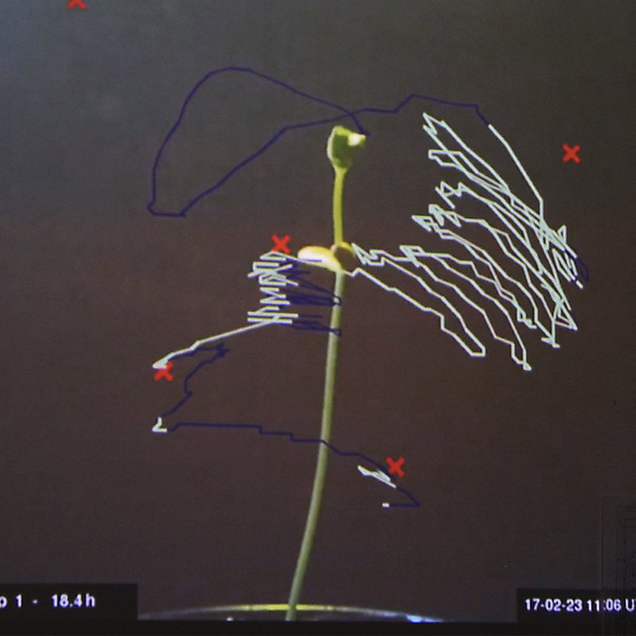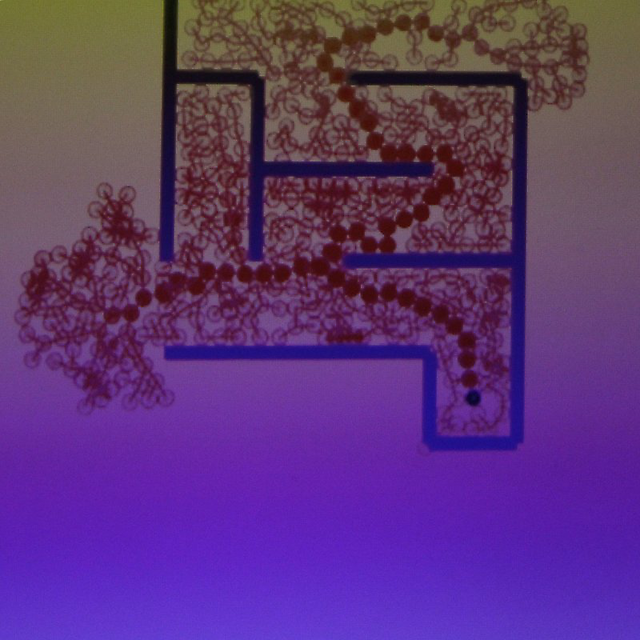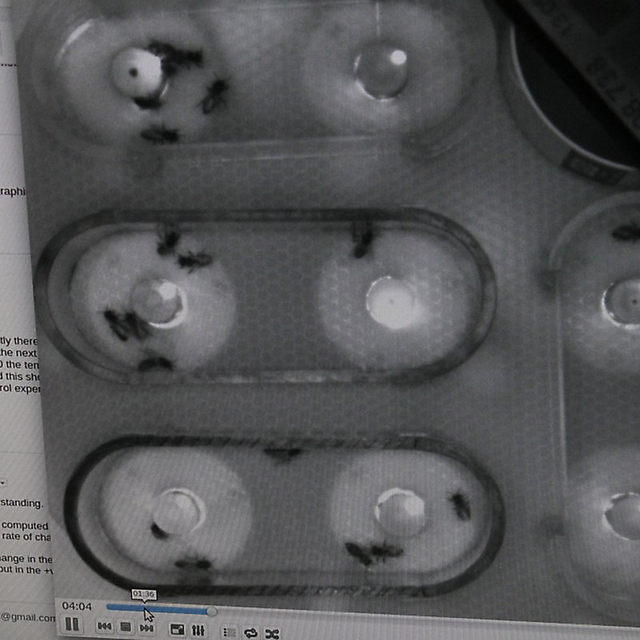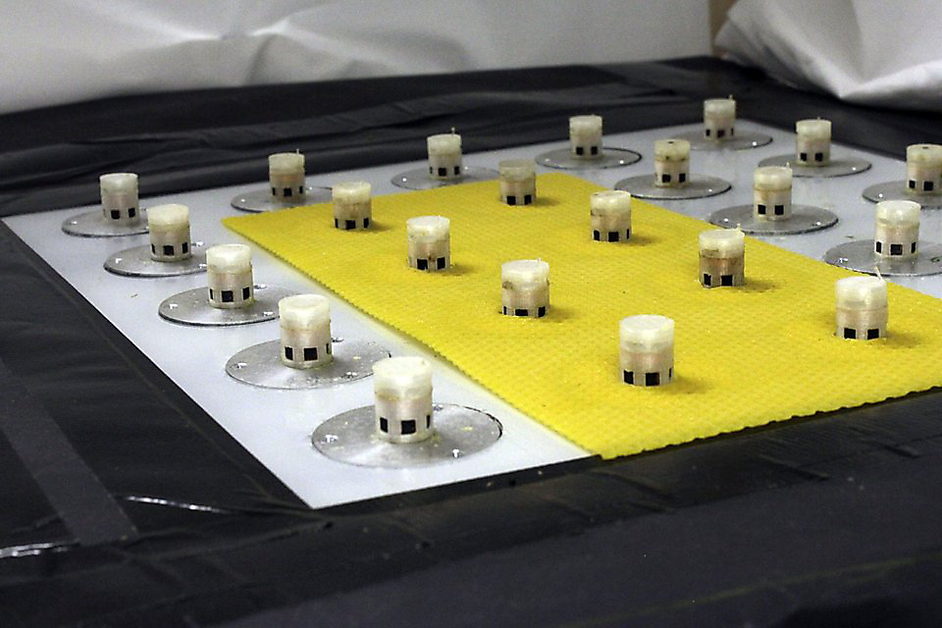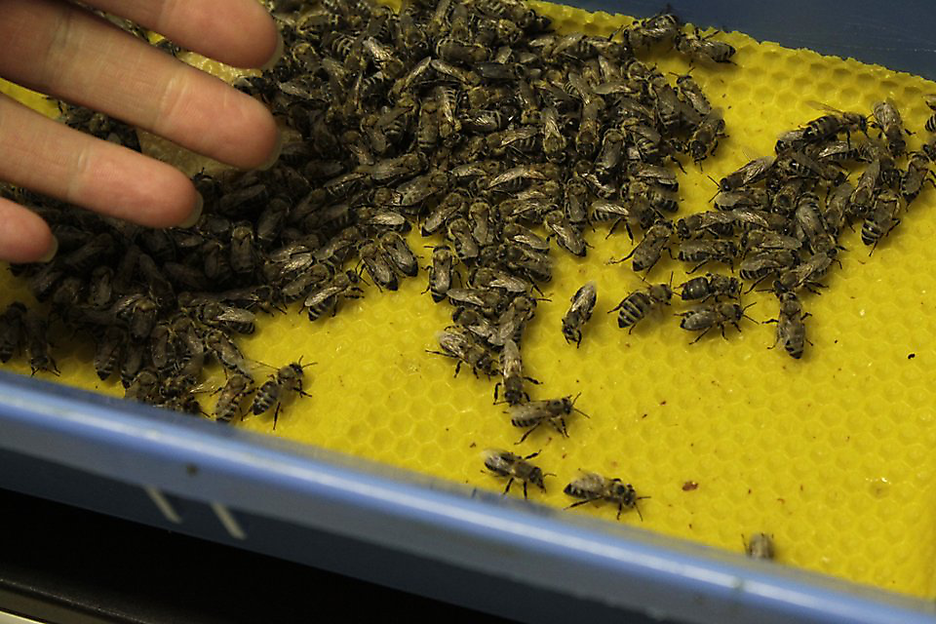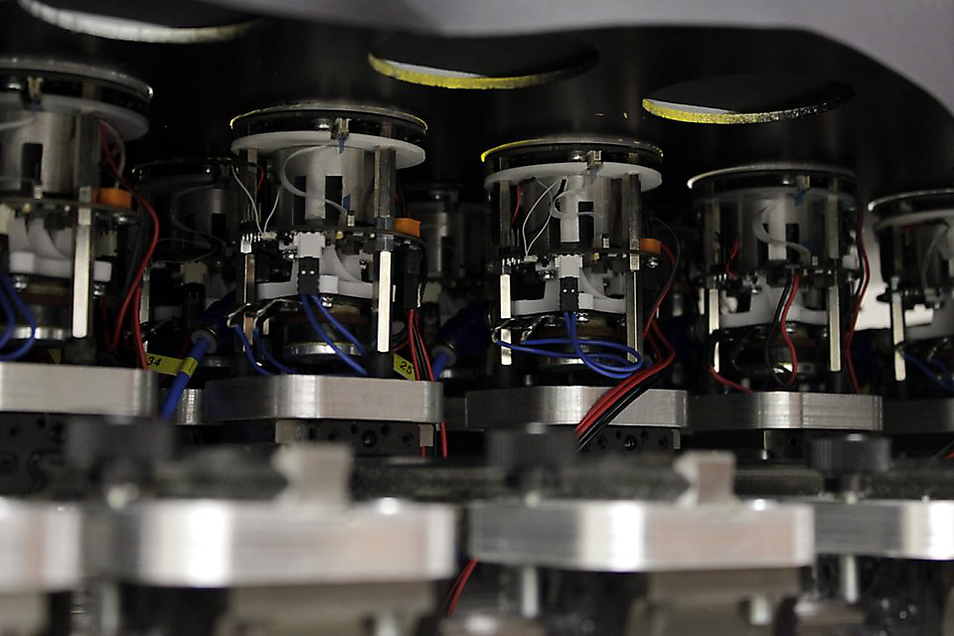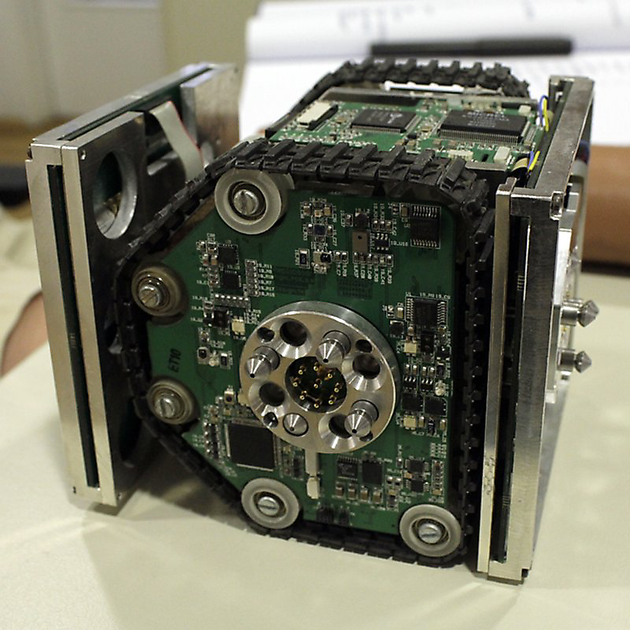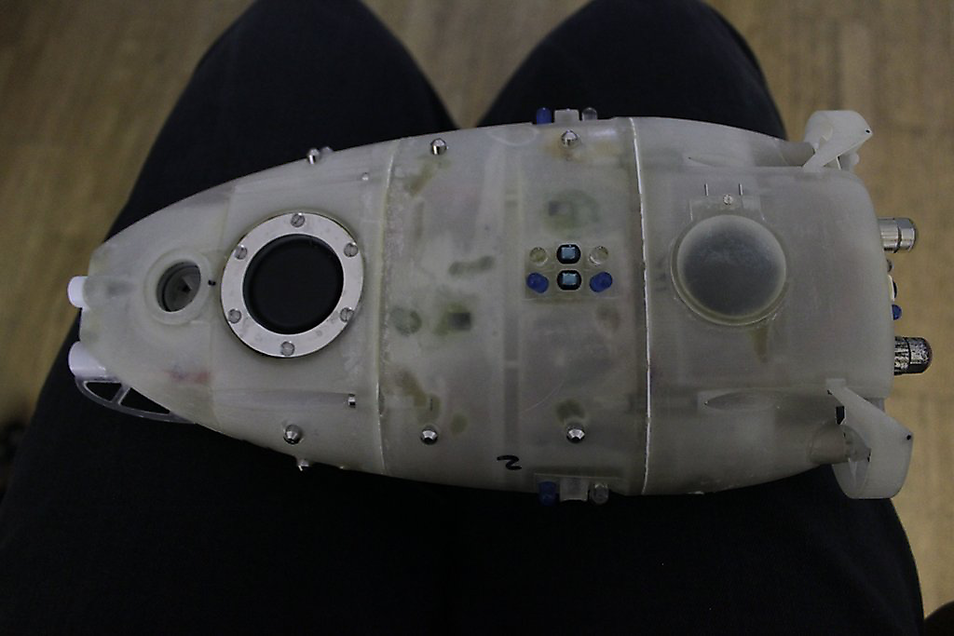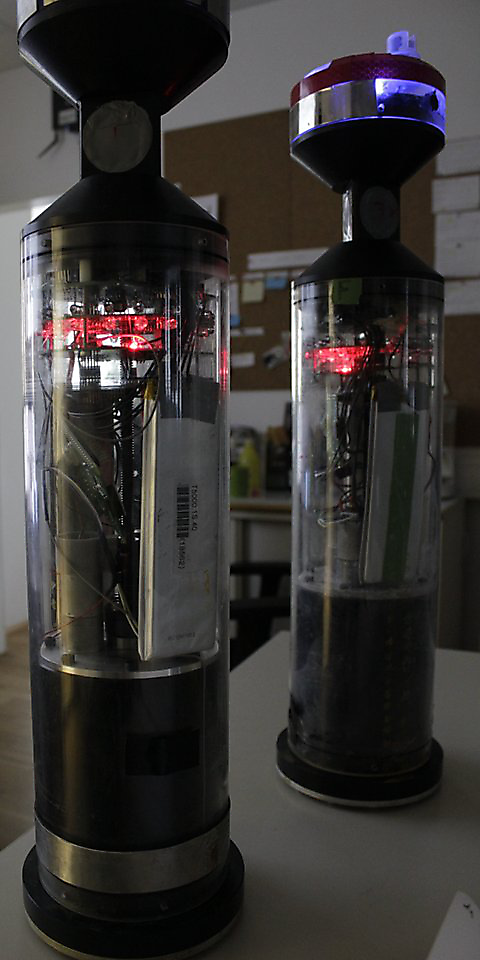Movement of a bean plant is feedback controlled through blue and white lights as it grows.
{kind: caption, group: bee3}
Artificial Life (A-Life) describes a research area, where concepts of life and living organisms are recreated technologically, e.g. using computer simulations, robots etc.
We were excited to find out that the University of Graz hosts an Artificial Life Lab that focuses precisely on swarm behaviour, including artificial bees and artificial fish. Its director Thomas Schmickl will be speaking at the opening of our exhibition about their research. Here are some photos from the lab.
{function: contextual}
Swarm organism that transports hormones to communicate food availability.
{kind: caption, group: bee4}
While the bee robots cannot crawl or fly, they have mechanisms to produce vibrations, regulate temperature, and emit light, and thereby communicate with real bees.
{kind: note}
Experiment where real and artificial bees form a coupled system that organises decisions.
{kind: caption, group: bee5}
